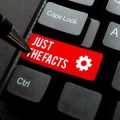Introduction to Crawlability and Indexability
When it comes to optimizing a website for search engines, two fundamental concepts every SEO professional must understand are crawlability and indexability. While these terms are often used interchangeably, they refer to distinct processes that play unique roles in getting your web pages visible on search engine results pages (SERPs). Crawlability is the ability of search engine bots—like Googlebot—to access and navigate your website’s content. Indexability, on the other hand, determines whether the content discovered by crawlers is eligible to be added to the search engine’s index and ultimately shown in search results. Both crawlability and indexability are foundational because without them, even the most well-crafted content may never reach your audience. In this article, we’ll break down the key differences between these concepts and explain why mastering both is essential for effective website optimization.
2. What Is Crawlability?
Crawlability refers to how easily search engine bots, like Googlebot, can access and navigate your website’s content. It’s the first critical step in the SEO process—if a search engine can’t crawl your pages, they won’t show up in search results at all. When we talk about crawlability, we’re really talking about the ability of these bots to follow links, read your site’s code, and discover new or updated content efficiently.
How Do Search Engine Bots Access Website Content?
Search engines use automated programs called “crawlers” or “spiders” to scan the web. These bots start by visiting a list of known URLs, then follow internal and external links found on those pages to discover additional content. The more accessible your site is to these bots, the better your chances of having all your important pages discovered and ranked.
Common Factors Impacting Crawlability
| Factor | Description | Impact on Crawlability |
|---|---|---|
| Robots.txt File | Controls which parts of your site are allowed or disallowed for crawling | A restrictive robots.txt can block important pages from being crawled |
| Internal Linking Structure | The way pages are linked within your site | Poor internal linking can leave some pages orphaned and undiscoverable |
| Site Architecture | How content is organized and structured | Complicated structures make it harder for bots to navigate efficiently |
| Server Errors (e.g., 404s, 500s) | Pages returning errors instead of valid content | Bots may abandon crawling if they encounter too many errors |
| Noindex Tags | Tells search engines not to index a page, but doesn’t prevent crawling | Can lead to wasted crawl budget if overused on non-essential pages |
Key Takeaway for SEOs
If you want your website to perform well in U.S. search results, ensuring solid crawlability is non-negotiable. Regularly audit your site for crawl errors, maintain a clean internal linking structure, and keep an eye on your robots.txt file settings. Remember, crawlability is the gatekeeper—without it, even the best content won’t get noticed by search engines.

3. What Is Indexability?
Indexability is a crucial concept in SEO that refers to the ability of a search engine to include a web page in its index after it has been crawled. While crawlability determines if a search engine can access your site, indexability is about whether those crawled pages are stored and eligible to appear in search results. This distinction is vital: just because Googlebot or Bingbot can crawl a page doesn’t mean it will be indexed.
How Do Pages Get Added to Search Engine Indexes?
Once a search engine bot successfully crawls your page, it evaluates the content and structure to decide if it should be added to its massive database—or “index.” The process involves parsing your HTML, analyzing on-page content, and considering meta tags such as <meta name="robots" content="noindex">. If nothing blocks indexing (like “noindex” tags or canonical directives pointing elsewhere), and the content meets quality standards, the page becomes part of the search engine’s index. Only then can it compete for visibility in search results.
What Determines If a Crawled Page Gets Indexed?
Several factors influence whether a crawled page makes it into the index. These include:
- Meta robots directives: Tags like “noindex” explicitly tell search engines not to add a page to the index.
- Duplicate content: If your content is substantially similar to other pages—either on your own site or elsewhere—search engines may choose not to index it.
- Content quality: Thin, spammy, or low-value pages are less likely to be indexed.
- Crawl budget: On larger sites, not all pages get crawled frequently; if a page isn’t crawled often, it might not be indexed or updated in the index quickly.
The Bottom Line
A page needs to be both crawlable and indexable to rank in organic search results. As an SEO professional, understanding how these two processes work together ensures you’re not only getting your site discovered but also seen by your target audience in Google’s search listings.
4. Key Differences Between Crawlability and Indexability
Understanding the distinction between crawlability and indexability is crucial for any SEO professional. While both concepts are closely related, they play different roles in how your site appears—or doesn’t appear—in search results. Let’s break down the main differences with real-world examples to highlight why a page might be crawlable but not indexable, or vice versa.
What Sets Crawlability and Indexability Apart?
| Crawlability | Indexability | |
|---|---|---|
| Definition | The ability of search engine bots to access and read a page’s content. | The ability of a crawled page to be stored in the search engine’s index and potentially shown in search results. |
| Primary Barrier | Blocked by robots.txt, nofollow links, or server errors (like 404s or 500s). | Blocked by meta robots tags (noindex), canonical tags, or manual removal from the index. |
| Outcome If Fails | The page will never be seen by search engines—can’t rank or appear anywhere. | The page can be crawled and understood, but won’t show up in SERPs. |
| Main Tools for Control | robots.txt file, internal linking structure, server status codes. | <meta name=”robots” content=”noindex”>, X-Robots-Tag HTTP header, canonical tags. |
Real-World Examples
Example 1: Crawlable but Not Indexable
Your website’s “Thank You” page is accessible to bots (not blocked by robots.txt) but contains a <meta name="robots" content="noindex"> tag. Googlebot can crawl and read the content, but it won’t add this page to its index, so it will never show up in search results. This is common for pages that serve post-conversion purposes only.
Example 2: Indexable but Not Crawlable (Rare)
A page previously allowed for crawling is now blocked via robots.txt but still exists in Google’s index because it was indexed before being blocked. Over time, if Google can’t recrawl the page, it may drop out of the index—but temporarily, you could have an indexed page that isn’t currently crawlable.
Example 3: Both Crawlable and Indexable
This is the ideal scenario for most web pages you want to rank. For instance, your homepage is accessible to bots and has no noindex directives or robot.txt blocks—so it gets crawled frequently and remains visible in search results.
Why These Differences Matter for SEO
If you misunderstand crawlability versus indexability, you could waste valuable crawl budget on non-essential pages or accidentally hide important content from Google. Regularly auditing both factors ensures that only your best content is discoverable and visible in search results—and that technical barriers aren’t holding you back from higher rankings.
5. Common Crawlability and Indexability Issues (and How to Fix Them)
Crawlability and indexability challenges are a major concern for SEO professionals in the U.S., often impacting how well a site performs in organic search. Knowing the most frequent technical problems—and how to address them—can make all the difference for your website’s visibility.
Duplicate Content
Duplicate content is a widespread issue that can confuse search engines, resulting in wasted crawl budget and diluted ranking signals. This problem commonly arises from URL parameters, printer-friendly pages, or HTTP/HTTPS and www/non-www variations.
How to Fix:
- Implement canonical tags to signal the preferred version of a page.
- Use 301 redirects for duplicate URLs where appropriate.
- Leverage Google Search Console’s “URL Parameters” tool to guide bots.
Broken Links and 404 Errors
Dead internal links and 404 pages disrupt crawlers’ ability to navigate your site, leading to missed indexing opportunities.
How to Fix:
- Regularly run site audits using tools like Screaming Frog or Ahrefs.
- Fix or redirect broken links promptly.
Blocked Resources
Accidentally blocking important pages or resources (such as CSS or JS files) in your robots.txt can prevent Googlebot from properly rendering and understanding your site.
How to Fix:
- Review your robots.txt file regularly to ensure you’re not disallowing essential assets.
- Use the “Inspect URL” feature in Google Search Console to check how Google views your pages.
Noindex Tags Misuse
Noindex tags are powerful, but when used incorrectly (or left on pages after development), they can unintentionally remove key content from search results.
How to Fix:
- Audit your site’s meta robots tags for unintended “noindex” directives.
- Create a process for reviewing meta tags before publishing updates.
Poor Internal Linking Structure
If pages are orphaned or deeply buried within your navigation, crawlers may have trouble discovering them—limiting their chances of being indexed.
How to Fix:
- Create a clear, hierarchical internal linking strategy that makes important pages easily accessible from your homepage.
- Add contextual links within relevant content across your site.
Pro Tip for U.S. Websites:
Always test changes in a staging environment first and use tools like Google Search Console and Bing Webmaster Tools to monitor crawl stats, coverage reports, and index status. Staying proactive with regular audits ensures both crawlability and indexability issues are caught before they hurt your SEO performance.
6. Why These Differences Matter for U.S. SEO Strategies
Understanding the distinction between crawlability and indexability is essential for American SEO professionals, as these technical fundamentals significantly impact how websites perform in the competitive U.S. digital landscape. The U.S. market is unique, with fast-evolving trends, diverse user behaviors, and a high concentration of digitally savvy consumers who expect seamless online experiences. Failing to address either crawlability or indexability can result in missed opportunities, as search engines may not discover or rank important content that drives local traffic and conversions.
Adapting to Local Search Trends
American users rely heavily on search engines for everything from local services to national news. Google’s frequent algorithm updates often cater specifically to improving results for U.S.-based queries, making it crucial for SEO specialists to ensure both crawlability and indexability are optimized according to current best practices. For example, Americans frequently use voice search and mobile devices, so ensuring mobile-friendly pages are both crawlable and indexable can directly influence visibility in local searches like “near me” queries.
User Behavior and Expectation
U.S. audiences expect quick access to relevant content. If your site suffers from crawl issues—such as blocked resources or poorly structured internal linking—search engines might not find new product pages or blog posts that align with trending topics or seasonal demand. Likewise, if indexability isn’t prioritized through correct use of meta tags and canonical URLs, critical landing pages might never appear in search results, leading potential customers straight to competitors.
Practical Applications in the U.S. Market
For American SEO professionals, practical application means routinely auditing sites with an eye toward both crawl paths (robots.txt, sitemaps) and index signals (noindex tags, canonicalization). These technical checks should be paired with market-specific keyword research and content strategies that reflect what U.S. users are searching for right now. By mastering both crawlability and indexability, SEOs can ensure their campaigns capture maximum organic traffic while meeting the evolving needs of American consumers.
7. Conclusion and Next Steps
Understanding the distinction between crawlability and indexability is crucial for anyone invested in website success, especially in the competitive U.S. digital landscape. While crawlability ensures that search engine bots can access your website’s content, indexability determines whether that content actually appears in search results. Confusing these two can lead to missed opportunities, wasted effort, or even critical visibility issues. For American businesses and SEO practitioners, recognizing this difference means you can prioritize technical fixes and content strategies more effectively.
To move forward, regularly audit your site using tools like Google Search Console and Screaming Frog to identify crawl errors and indexing issues. Make sure your robots.txt file isn’t blocking important pages and review meta tags to prevent unintentional “noindex” directives. Additionally, focus on building a logical site structure with internal linking that guides both users and search engines to key pages. Don’t forget to monitor server logs for unexpected crawl behavior—this is often overlooked but provides valuable insight into how bots interact with your site.
Ultimately, staying proactive about both crawlability and indexability will help ensure your most valuable content is discoverable and ranks well in U.S. search results. By treating them as separate but equally important aspects of technical SEO, you set your website up for sustainable organic growth and better user experiences.


